A couple of years ago, I traveled to the the Galápagos Islands with my mom. It was truly a dream come true! I took a sketchbook along, because that’s what I do. I’m always scribbling things down. Often, afterwards, I can’t even read my own handwriting. But I discovered long ago that the act of writing something down—or drawing it—helps me remember it better. And maybe differently. Anyway, I like it. I do it. A lot.
Other people on the trip started to notice what I was doing. The guides commented appreciatively when they saw me hanging on their every word, soaking up the information that poured out of them. The other passengers peered over my shoulder as I scrawled contour lines that defined an iguana (maybe it was the one that had just sneezed on me?). “You look,” someone said as they smiled while walking past me, “like a British naturalist.” I’m usually pretty quiet, but my sketchbook gave people a sort of permission to talk to me, and made it easier for me to talk to them, too. No one cared—or at least they did not complain to me—that I was always a step behind, always running to catch up, always trying to record just one more thing in this magical place.
If Kate Rutter had been along on that trip, I bet she would have been right there with me. She also writes about and draws the natural world. The questions she asks of both herself and the world around her benefit me and everyone around her. I have worked with her behind the scenes several times during the online Wild Wonder Conference, and it’s always a pleasure to spend time with someone so organized, enthusiastic, and creative, who loves to share what she’s learned with other people. I’m delighted to share her story and her work here on Twig & Ink.
Interview: Kate Rutter
What sort of work do you do?
I'm an urban naturalist, native plant enthusiast, educator, recovering technologist, and enthusiastic sketcher. I have a variety of sketching practices, but the one that brings me most alive is nature journaling. I work to enliven nature+human connection through sketching, observation, and curiosity, and to advocate for ways to be in healthy reciprocity with our nature kin. I don't consider my nature journaling to be an art practice; I consider it a seeing practice of documented curiosity. I love experimentation, discovery, grappling with failure, and learning in public. If a topic is related to nature reciprocity and visual expression, I'm in!
What aspect of your work has the most personal meaning for you?
The (seemingly) mundane, the everyday, the things overlooked is what I seek out and get excited about. I'm enchanted with the pulse of living things, the little bits and bobs of life that, when observed with curiosity and attention, aggregate into things beautiful. The part of nature journaling that holds the most meaning for me is how nature journal pages show so many different ways to celebrate nature. It's amazing to see the magic of the world through the eyes and journals of others.
How are science, art, and writing part of your work, and how is the interaction between these areas important to you?
I love the weird and marvelous stories that scientific research reveals. And I love how beauty and artistry are creations of all beings, not just humans. To me, science and art are both ways of listening, learning, and creating. And they share the experimentation loop: trying things out, testing things, learning from the results, and using that learning to make new experiences and experiments. It's an iterative process, and one that delights and humbles with each whorl around the loop.
Is there a particular scientific/environmental problem that feels important to you? What do you do about that?
The challenge that itches at me most is how we can achieve better harmony, equity, and balance as human members of the global nature family. Mental models that place humans as superior to nature have caused so much damage, so much extraction. We humans need to re-gain our equipoise: our place of balance as a part of nature, not apart from nature. Daniel Wildcat says it so well: "We live among relatives, not resources."
Reading Braiding Sweetgrass by Robin Wall Kimmerer reshaped my whole mental landscape, and inspired me to make a hard-swerve out of the manufactured world of technology, and into the real world of natural beings as family. I sometimes say "I traded screens for greens," and I hope to invite others into nature appreciation and activism through the act of keeping a nature journal.
What influences and inspires you?
Every day is alive with inspiration, so I'll just pick a few: Albany Hill in Northern California, Aristolochia vines, Black-crowned night herons, Buckeye trees, maps, mutualism, monsoon, seeds, sensory languages, soil, the smell of petrichor.
In nature journaling, I've learned so much from Claire Walker Leslie, John Muir Laws, and Hannah Hinchman. I first discovered nature journaling through The Art of Field Sketching by Claire Walker Leslie and it changed my life. That was back in the early '90s, and that early exposure was fundamental for me, even though it took me 30+ years to go "all in." Mike Rhode's sketchnoting work and Wendy MacNaughton's visual journalism are WOW. Yvea Moore inspired me to begin a nature stewardship practice, which I'm deeply thankful for.
I love the delicious writings of bel hooks, Mary Oliver, and Rachel Carson.
Do you have a memorable experience that has solidified your belief in the value of the work that you do? (from Shirlene Chiam, 012)
The most profound experience was in Fall 2021. I was sitting with my dad who was dying of cancer, the last time in his life that he went outside. As we sat together in quiet, he looked around the backyard, a yard he cared for for over 60 years, and he said "I wish I had taken the time to learn more about these plants and how they grow." That was a catalyst for me and a real wake-up call. I made the choice to learn from the world, and I'm very thankful for this last gift from him.
How many of the 5 human senses are involved in your workflow? How might you try and involve more senses than you currently do? (from Aniruddha Gupte, 008)
Well. I'm a wee bit obsessed with sensory journaling and how to listen with our whole bodies through "embodied observation," to take time to notice and observe through multiple senses. Part of my practice is exploring ways to translate non-visual input into visual output. It's abstract, subjective, and weird, and incredibly fun! Even something simple like making marks that represent birdsong adds sensory dimension to a nature journal. In 2021, I shared some of my experiments in a workshop at the Wild Wonder Nature Journal conference, and the work that people created was really cool.
Do you have a formative experience from growing up that you feel was your 'spark' to lead to you where you are now? (from Jenn Houle, 006)
Like many kids, I drew a lot when I was little. The spark was my mom, a skilled drafter and sketcher, who encouraged, guided, and helped me discover that drawing was a wonderful way to learn and to communicate. Drawing and sketching have been core to me ever since, in all areas of my life. Without that encouragement, I don't know if I would have continued to draw, since it was not very encouraged or celebrated in school. I’m so thankful for her! It's an important reminder that one small act can have a huge influence on a life.
If you could have a day to hang out with anyone in history, who would you choose, why, and what would you do together? (from Yvea Moore, 004)
I'd take a road trip with American naturalist, activist, author, and illustrator May Theilgaard Watts, who wrote one of my favorite books: Reading the Landscape of America. For 50+ years she visited and re-visited a wide variety of ecologically important places across North America, and wrote about the natural history and the human impact over time. Her fierce perspectives, lyrical writing, and engaging sketches are stunning, and it would be a hoot to ride along and listen in one of her jaunts. And her legacy endures: she's the one who proposed the idea that developed into the national Rails to Trails program in the U.S.
Thank you, Kate!
You can discover more about Kate on her website and on Instagram.
Branching Out
Rooted (Stuff I like, maybe slightly off topic):
Ever wonder how land damaged by wildfires regenerates? In the western United States, it sometimes gets a unique sort of help from the Sagebrush and Prisons project.
Rounded (Preview of coming attractions):
The second class I’m teaching as part of Hawk Mountain Sanctuary’s 2024 Winter Artisan Series, Art of Trees, will be held (in person!) on March 3rd. To sign up, and to learn more about this class and the rest of the series, visit here.
I also currently have artwork on display at Studio B (as part of their eARTh & Climate exhibit), and at the Yocum Institute (as part of the Berks Art Alliance Member Show). Later this spring and through the summer, I’ll have a solo show in Reading, PA! More information coming soon.
Reaching (A question for you!):
What can we do to make nature more accessible and welcoming to people of all backgrounds and abilities? Let me know your thoughts in the comments below.


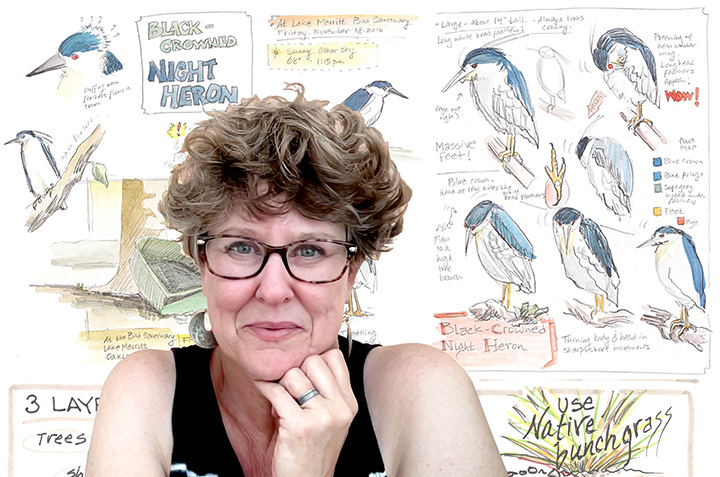
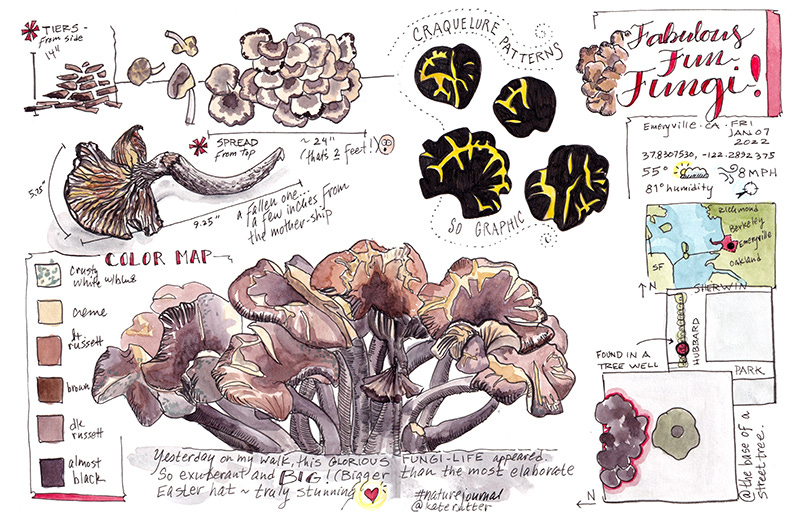
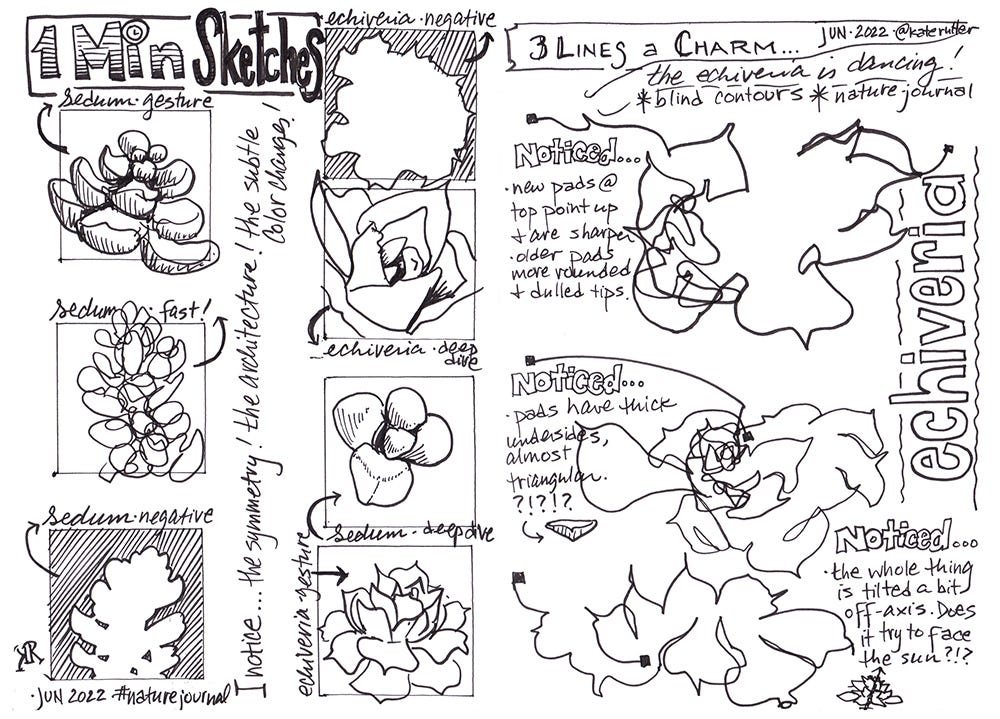
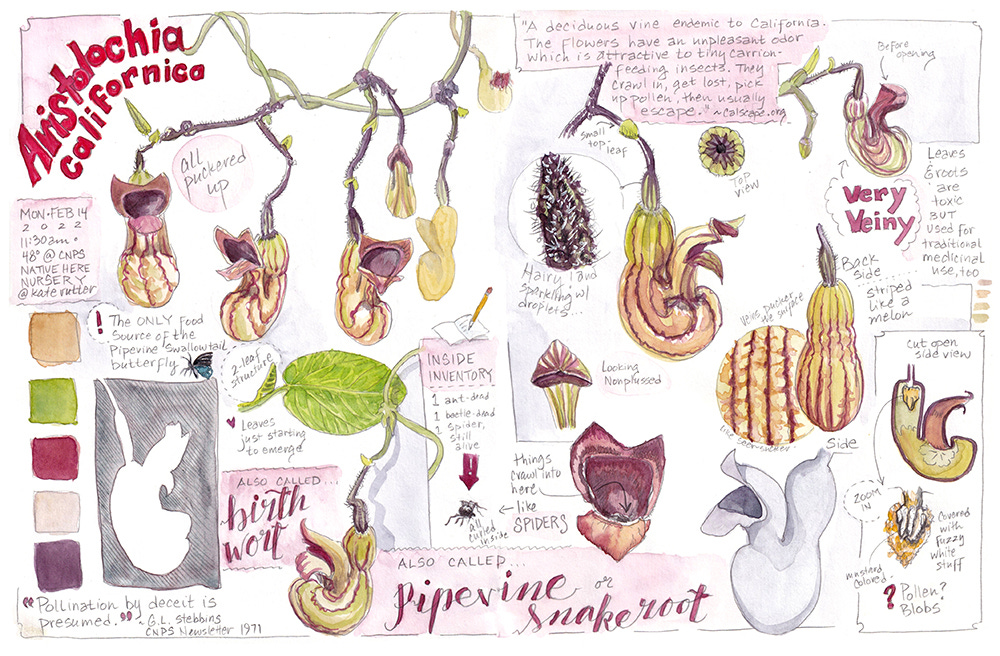
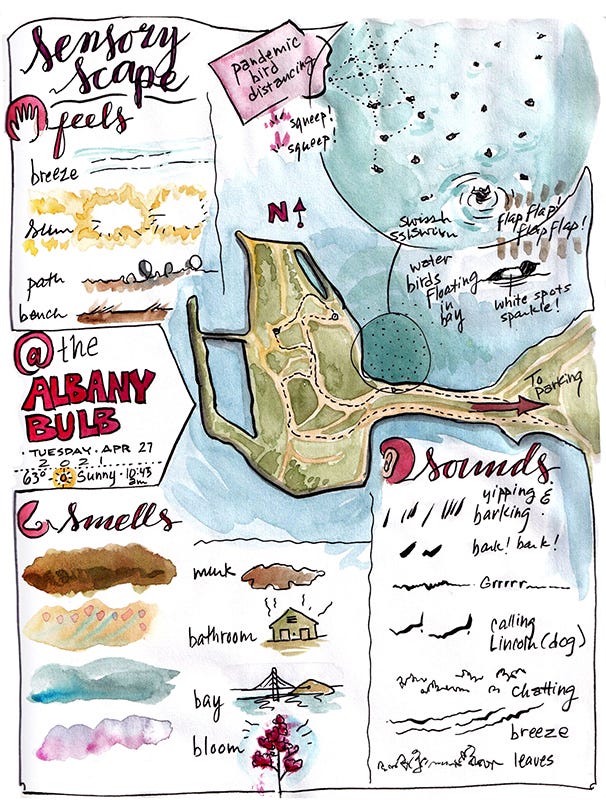
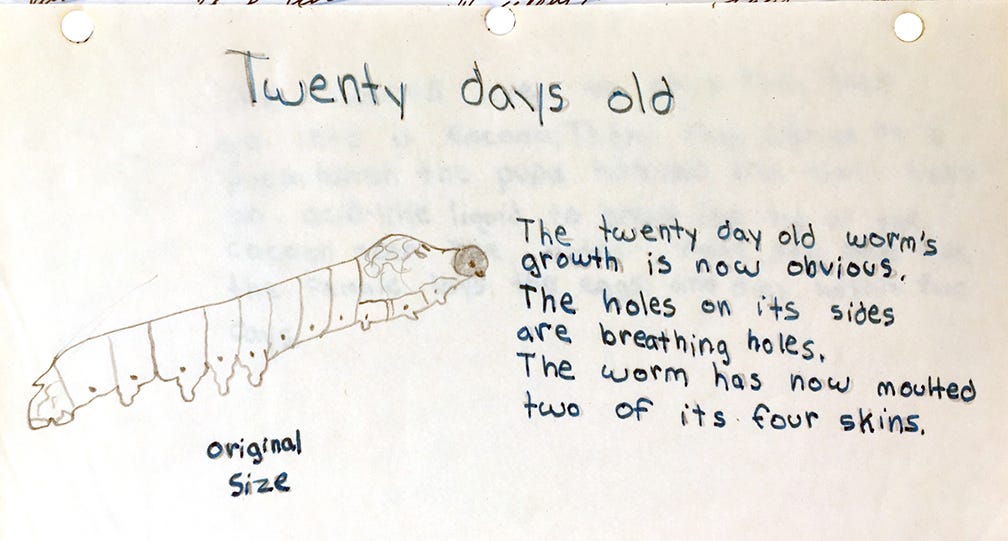
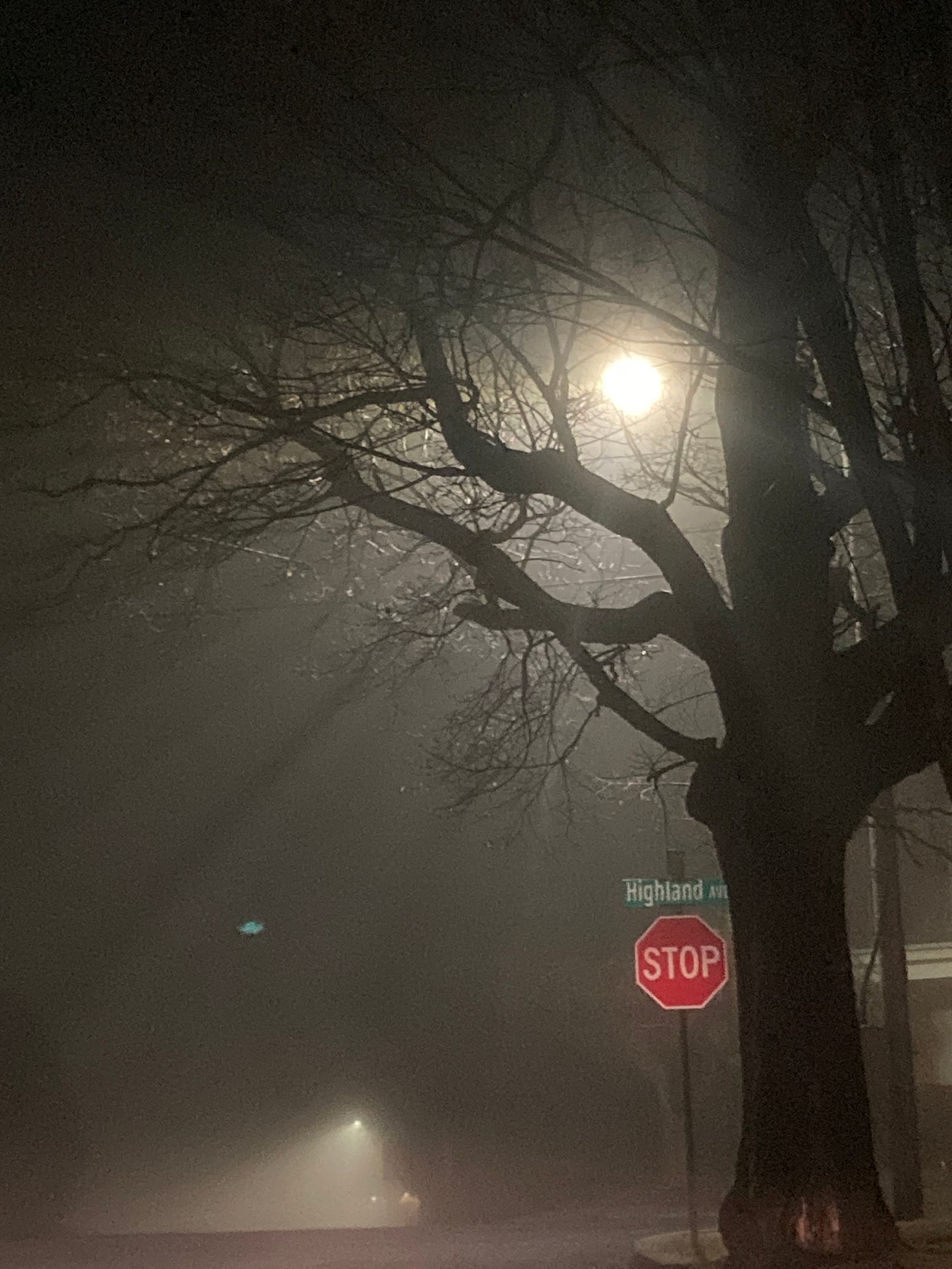
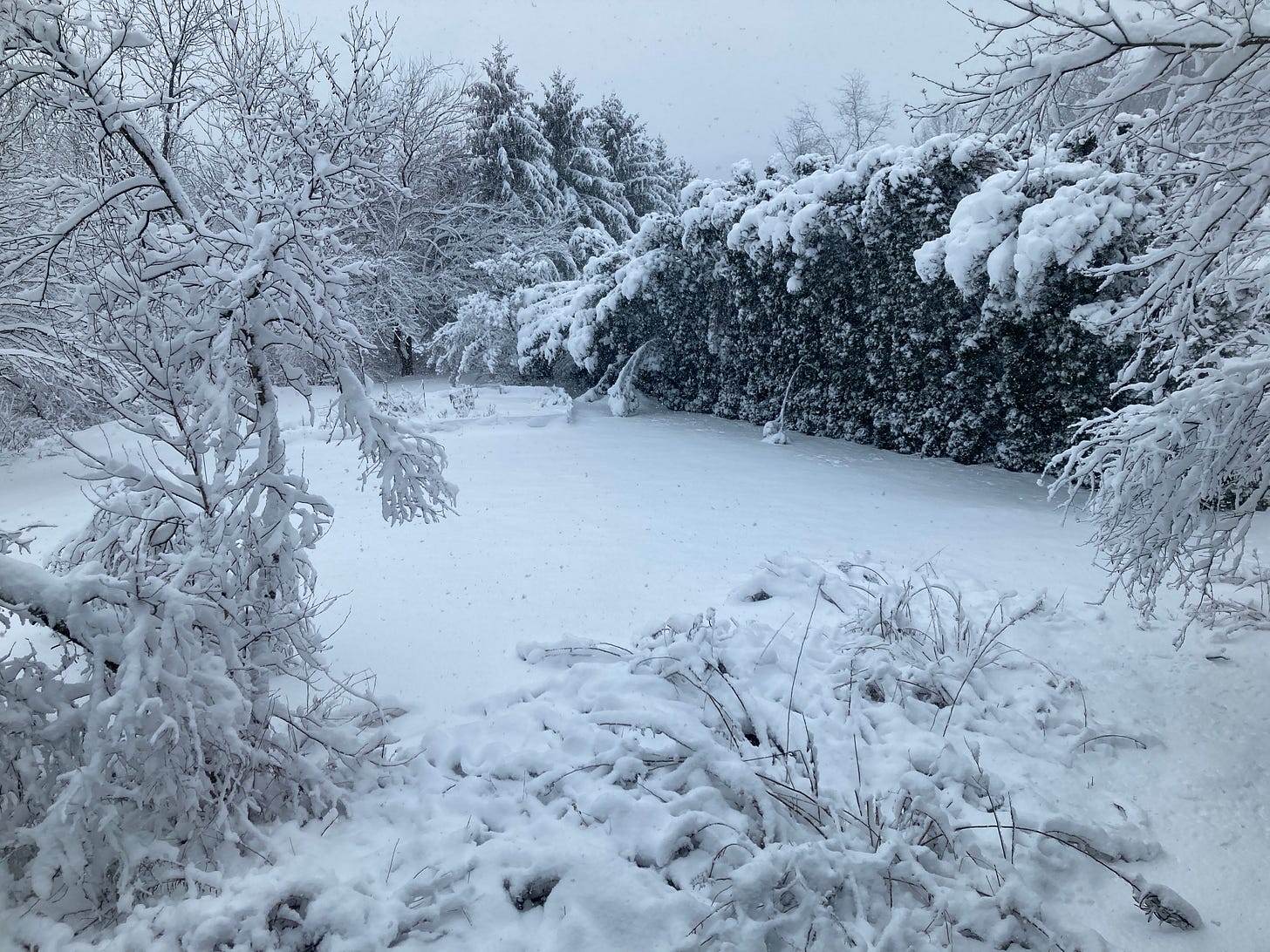

Wow! Everything Ms. Rutter has to say is so relatable and inspiring to me. Thank you for sharing her with your readers.
Another thoughtful and insightful interview. I appreciate the many references which made me want to learn more.